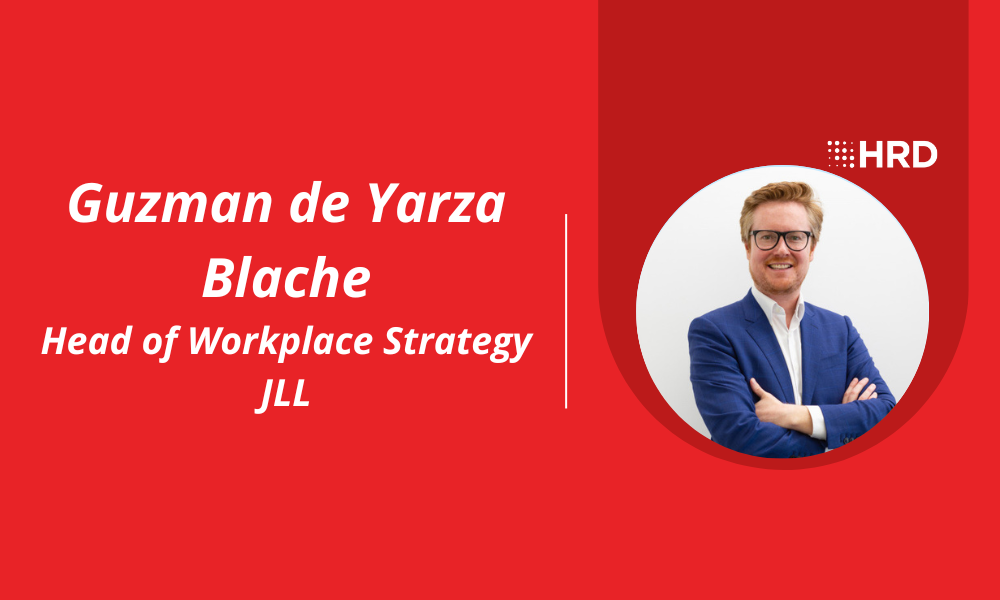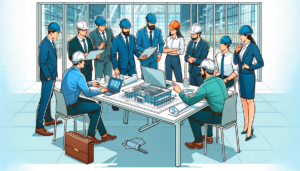Office evolution: Accommodating employee priorities to elevate hybrid work
- 5 Min Read
The workplace has changed beyond recognition compared to a decade ago when every office was filled the brim with occupied desks. With 53% of organizations planning to make remote working a permanent fixture by 2025, hybrid is here to stay. But the question is, how can workplaces continue to adapt to accommodate this new way […]
- Author: Guzman de Yarza Blache
- Date published: Jan 25, 2023
- Categories

 The workplace has changed beyond recognition compared to a decade ago when every office was filled the brim with occupied desks. With 53% of organizations planning to make remote working a permanent fixture by 2025, hybrid is here to stay. But the question is, how can workplaces continue to adapt to accommodate this new way of working?
The workplace has changed beyond recognition compared to a decade ago when every office was filled the brim with occupied desks. With 53% of organizations planning to make remote working a permanent fixture by 2025, hybrid is here to stay. But the question is, how can workplaces continue to adapt to accommodate this new way of working?
The biggest challenge facing HR professionals as they grapple with a new hybrid working world is that no one has a magic formula. There is no one size fits all solution for reimagining the workplace. This challenge requires a holistic approach that considers the unique set-up of each business and the changing priorities of employees. As we reimagine what in-person work looks like, here are the core themes to keep in mind.
Employee expectation vs. employee reality
There is a sense that the purpose of the office is crystalized amongst business leaders, with decision-makers saying that the office is a critical part of their business. However, the average UK worker is only going into the office 2.6 days a week. There is a significant gap between the expectations of hybrid workers and the workplace experience employers currently deliver to them.
HR professionals are acutely aware of this: 56% of senior HR leaders plan to refit or redesign their office space in the next 12 months, in part to deliver a workplace experience that incentivizes employees to come in, despite the commute. The question is where employees fit into this process. There is now an opportunity to co-create the future of in-office work with the help of your workforce. Discover what purpose the workplace can deliver to your team, and factor this into your plans for any redesign.
Of course, firms cannot meet all employee wishes or demands. In these cases, the best way to bridge any gulf between expectation and reality is consistent and transparent communication about what is realistic.
Employee priorities are changing
Employees have become entrusted to take control of their working day and make the choice to work from home. This same flexibility and autonomy are likely to also become a staple feature of future in-person workspaces. Offering a hotdesking system, collaborative spaces and quiet zones will be some of the ways businesses can provide staff with choice over how they work while in the office.
JLL research, which expands on the evolution of workspaces and new priorities for post-pandemic workplace design, found that incorporating sustainability, technology, and health and wellness have all emerged as key priorities for employees when choosing a place of work. A workplace that aligns with the sustainability targets of the business and prioritizes the physical and mental health and well-being of staff, in addition to a strong digital infrastructure, is now held in high esteem. When it comes to sustainability, 74% of organizations are likely to pay a premium for spaces with leading sustainability and green credentials. Moreover, 77% of employees expect the workplace to have a positive impact on the environment.
Inclusivity will continue to be a top priority
What we are also seeing now more than ever is a greater interest in the DE&I implications of the built environment. Companies should raise the bar of their spaces to accommodate the needs of certain collectives. This includes accessibility, sexual orientation and gender identity, neurodiversity, ethnicity and culture, and more. It is encouraging to see that more businesses than ever are now willing to offer inclusive spaces. Such spaces benefit the productivity and well-being of all their employees.
Adapting the office starts with a shift in culture
The changes businesses make to meet these evolving employee priorities do not have to be large-scale. We’re in a tough economic climate where businesses are grappling with rising costs. Changes toward delivering a dynamic and attractive workplace can start with small steps. Easy and cost-effective options include:
- Creating more green spaces with foliage
- Removing desks to make way for collaborative zones
- Implementing a free seating policy that creates flexibility and choice.
In terms of the larger-scale structural changes, businesses must create and champion a hybrid mindset. This mindset should foster the right culture and behaviors for managers and employees to work productively. Adopting an inclusive culture that acknowledges different working patterns and behaviors will be the new normal. Businesses that ignore the rise of hybrid, and how it cohesively works for staff, could fall behind if the workforce becomes disengaged with a purely office-first approach from leadership. The same fate may also meet businesses that fail to bring employees into the conversation of hybrid work, understand their priorities and communicate about plans for changes to in-office working.
The long-term gain of an office redesign
Along with a restructuring of company values and culture, investing, re-imagining, and repurposing existing workspace to achieve a longer-term pay-off should be a top priority for businesses. Staff retention and attraction are potential by-products of that initial investment. And so are cost benefits that come from more energy-efficient and sustainable spaces. Even with the current economic headwinds, expectations and therefore drive in this space will not go away.
In the longer term, HR professionals must identify opportunities to drive concepts like sustainability, tech, and flexibility. It is a chance to futureproof their businesses and ensure offices continues to be an attractive option for the workforce.
________________
Guzman de Yarza Blache, Head of Workplace Strategy, EMEA, JLL








